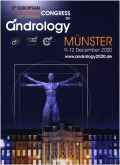- 钛学术文献服务平台 \
- 学术期刊 \
- 医药卫生期刊 \
- 外科学期刊 \
- 亚洲男性学杂志(英文版)期刊 \
HORMONAL REPLACEMENT THERAPY AND AGING: ASIAN PRACTICAL RECOMMENDATIONS ON TESTOSTERONE SUPPLEMENTATION
HORMONAL REPLACEMENT THERAPY AND AGING: ASIAN PRACTICAL RECOMMENDATIONS ON TESTOSTERONE SUPPLEMENTATION
基本信息来源于合作网站,原文需代理用户跳转至来源网站获取
摘要:
Profound and diffuse alterations in the production of gonadal and adrenal androgens as well as growth hormone are associated with aging. To convey this concept more appropriately, partial endocrine deficiency in the aging male (PEDAM) was introduced as a term for the phenomenon of hormonal alterations in the aging male. Hormones responsible for some of the manifestations associated with male aging are testosterone, growth hormone, dehydroepiansdrosterone (DHEA), melatonin, thyroid hormones and leptin. Of these, testosterone has been widely investigated and its beneficial and adverse effects on male bodily systems are relatively well established. However, a serious body of confusion and misunderstandings surrounding the diagnosis, treatment and monitoring of men suspected of having androgen deficiency has been raised. Therefore, it is timely to provide practical criteria for diagnosis and treatment to avoid misconception about the use of testosterone in the aging male. To provide an understanding and info

推荐文章
Asian Imhs Intertan钉与PFNA内固定治疗股骨粗隆间骨折的比较
股骨粗隆间骨折
Asian Imhs
Intertan钉
PFNA
Priming Therapy方案治疗难治复发性急性髓性白血病的临床研究
急性髓细胞白血病
粒细胞集落刺激因子
阿糖胞苷
阿克拉霉素
高三尖杉酯碱化疗
凋亡
科技期刊编辑出版人员审读论文查重结果的优化策略与实践—以Aging Medicine杂志为例
查重
优化策略
科技期刊
内容分析
关键词云
关键词热度
相关文献总数
(/次)
(/年)
文献信息
| 篇名 | HORMONAL REPLACEMENT THERAPY AND AGING: ASIAN PRACTICAL RECOMMENDATIONS ON TESTOSTERONE SUPPLEMENTATION | ||
| 来源期刊 | 亚洲男性学杂志(英文版) | 学科 | 医学 |
| 关键词 | 无口 | ||
| 年,卷(期) | 2003,(4) | 所属期刊栏目 | |
| 研究方向 | 页码范围 | 339-344 | |
| 页数 | 6页 | 分类号 | R458.7 |
| 字数 | 语种 | 中文 | |
| DOI | |||
五维指标
引文网络
引文网络
二级参考文献 (0)
共引文献 (0)
参考文献 (0)
节点文献
引证文献 (0)
同被引文献 (0)
二级引证文献 (0)
2003(0)
- 参考文献(0)
- 二级参考文献(0)
- 引证文献(0)
- 二级引证文献(0)
研究主题发展历程
节点文献
无口
研究起点
研究来源
研究分支
研究去脉
引文网络交叉学科
相关学者/机构
期刊影响力
亚洲男性学杂志(英文版)
主办单位:
中国科学院上海药物研究所
出版周期:
双月刊
ISSN:
1008-682X
CN:
31-1795/R
开本:
大16开
出版地:
上海市太原路294号16号楼302室
邮发代号:
4-648
创刊时间:
1999
语种:
eng
出版文献量(篇)
2771
总下载数(次)
1
总被引数(次)
9935
期刊文献
相关文献
推荐文献
- 期刊分类
- 期刊(年)
- 期刊(期)
- 期刊推荐
亚洲男性学杂志(英文版)2022
亚洲男性学杂志(英文版)2021
亚洲男性学杂志(英文版)2020
亚洲男性学杂志(英文版)2019
亚洲男性学杂志(英文版)2018
亚洲男性学杂志(英文版)2017
亚洲男性学杂志(英文版)2016
亚洲男性学杂志(英文版)2015
亚洲男性学杂志(英文版)2014
亚洲男性学杂志(英文版)2013
亚洲男性学杂志(英文版)2012
亚洲男性学杂志(英文版)2011
亚洲男性学杂志(英文版)2010
亚洲男性学杂志(英文版)2009
亚洲男性学杂志(英文版)2008
亚洲男性学杂志(英文版)2007
亚洲男性学杂志(英文版)2006
亚洲男性学杂志(英文版)2005
亚洲男性学杂志(英文版)2004
亚洲男性学杂志(英文版)2003
亚洲男性学杂志(英文版)2002
亚洲男性学杂志(英文版)2001

 免费查重
免费查重










